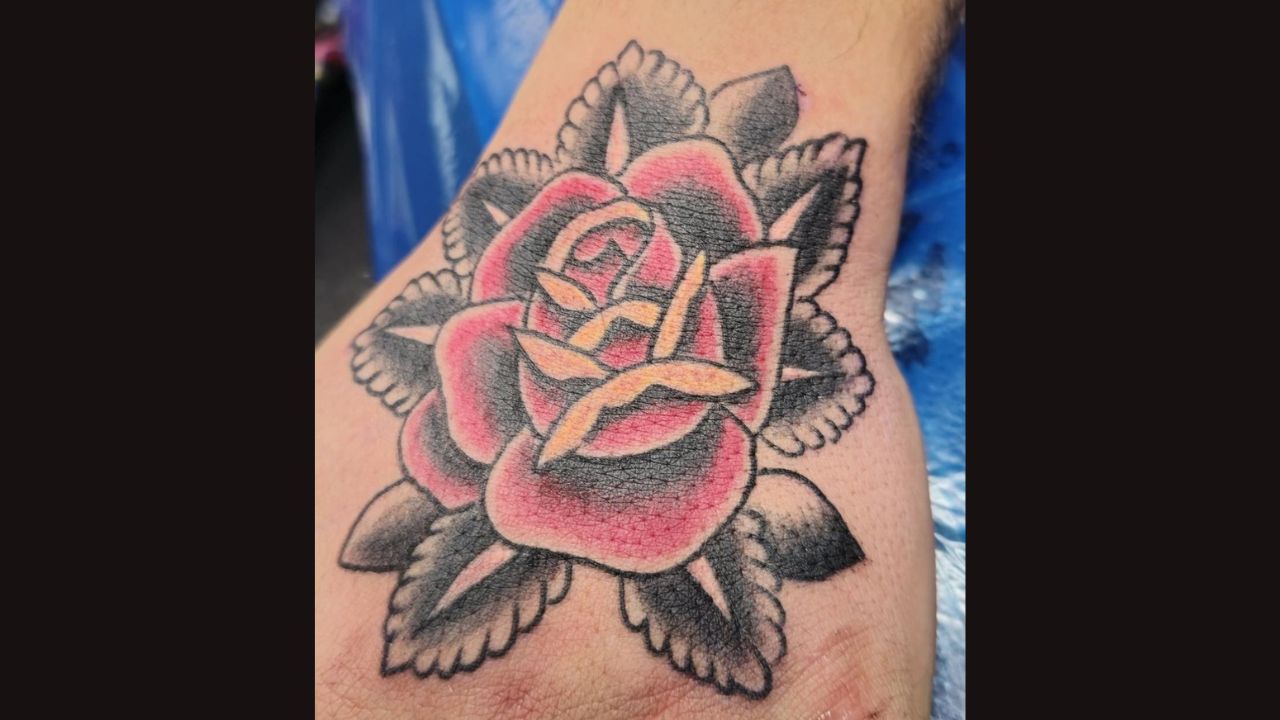Every tattoo tells a story but only if it heals the way it should. As an artist who’s worked on hundreds of tattoos over the years, I’ve seen how much difference good aftercare makes. A beautifully done tattoo can lose its vibrancy, blur, or even scar if not cared for properly.
After you leave the studio, your skin begins the healing process, and how you treat it in those first few weeks determines how your tattoo looks for the rest of your life. Understanding why cleaning tattoo matters is the first step toward ensuring your new ink heals perfectly.
Below are the top 10 aftercare mistakes I’ve seen clients make along with professional tips to help you avoid them and keep your tattoo looking bold, crisp, and healthy.
Every artist has their own aftercare recommendations based on experience, tattoo style, and the products they trust. Ignoring those directions is one of the biggest mistakes you can make.
Some people rely on generic online advice, but your tattoo artist understands your specific skin type and how your tattoo will respond. If they recommend a particular moisturizer or cleaning routine, follow it precisely. Your skin and your tattoo will thank you.
It’s important to keep your tattoo clean, but overwashing can strip your skin of natural oils needed for healing. Similarly, using harsh soaps or scented body washes can cause irritation or dryness.
Use a mild, fragrance-free antibacterial soap and lukewarm water. Gently clean your tattoo twice a day and pat dry with a clean towel. Avoid scrubbing or rubbing the area.
More lotion doesn’t mean faster healing. In fact, over-moisturizing can clog pores and suffocate your tattoo, slowing the process or even causing small breakouts.
Stick to a light, unscented lotion applied in a thin layer two to three times a day. If your tattoo looks shiny or sticky after moisturizing, you’ve used too much. Let your skin breathe.
As your tattoo heals, it’s normal for it to flake and itch but resist the urge to scratch or peel the skin. Doing so can pull out ink and leave patchy spots or scars.
If the itching becomes unbearable, apply a small amount of fragrance-free moisturizer or gently tap the area instead of scratching. Remember: patience during this phase pays off with a smoother, cleaner result.
Soaking a new tattoo in water can soften scabs, cause ink loss, and expose it to bacteria. Avoid pools, hot tubs, lakes, or long baths for at least two to three weeks.
Showers are fine, but keep them short and avoid direct water pressure on your tattoo. If you’re unsure, follow your tattoo aftercare guide or ask your artist for a personalized timeline.
New tattoos are especially sensitive to UV light. Even a short time in the sun can cause fading or irritation. Once your tattoo has healed, make sunscreen a daily habit.
Use a high-SPF, fragrance-free sunscreen on healed tattoos to keep the colors vibrant and lines crisp. Remember, UV rays are one of the main reasons tattoos lose their brilliance over time.
Tight fabrics can rub against your tattoo, causing irritation and trapping moisture. Dirty clothes can introduce bacteria, increasing the risk of infection.
Opt for loose, breathable clothing especially in the first week. Avoid anything that sticks to your skin, like synthetic workout gear. Clean, soft cotton is your best friend during this stage.
One of the most important parts of aftercare is knowing when something isn’t right. Redness, swelling, or tenderness are normal in the first few days—but if they worsen or you notice excessive oozing, it may be time to consult a professional.
Recognizing tattoo infection signs early helps prevent more serious problems. If you’re unsure, contact your artist or a healthcare provider right away. It’s better to ask questions than to risk complications.
Some people apply alcohol, peroxide, or “natural” DIY mixtures on fresh tattoos. These can kill healing skin cells, cause burns, or pull out pigment.
Stick to products specifically recommended for healing tattoos. Less is more gentle cleansing, light moisturizing, and clean skin are all your tattoo really needs.
Tattoo aftercare doesn’t end once your tattoo peels. Long-term care keeps your ink bright and skin healthy. Regular moisturizing, proper sun protection, and a balanced skincare routine all play a role.
Even years later, tattoos can fade or dull without care. Treat your ink as a permanent investment because it is.
Aftercare is about consistency, not perfection. You don’t need fancy products or complicated routines; you just need to stay clean, moisturized, and patient. Small actions like washing your hands before touching your tattoo or changing your bedsheets regularly make a big difference.
Taking these steps ensures that the time, pain, and money you invested in your tattoo pay off with a lifetime of vivid, beautiful art. And if you ever have questions, your best local tattoo shop is always happy to help guide you through the process.

1. How do I know if my tattoo is healing properly?
A normal healing tattoo may look slightly red, peel, and itch as it recovers. It should gradually smooth out and look less shiny over time. If you notice spreading redness, excessive swelling, or unusual discharge, it may be best to consult your artist or a doctor.
2. Can I shower with a fresh tattoo?
Yes, but keep it quick. Use lukewarm water and avoid letting the stream hit the tattoo directly. Gently pat it dry afterward never rub. Avoid baths until it’s fully healed.
3. What should I put on a healing tattoo?
Use a thin layer of fragrance-free, gentle lotion or tattoo-specific ointment as recommended by your artist. Avoid petroleum-based or scented products that can clog pores or irritate your skin.
Your tattoo’s long-term beauty depends on how well you care for it during the healing process. Avoiding these common mistakes will help you prevent scarring, fading, or infection and ensure your tattoo heals cleanly and evenly.
Whether it’s your first or your tenth, remember that every tattoo is a collaboration between artist and client. Take care of your skin, follow professional advice, and you’ll enjoy a design that stays bold, bright, and meaningful for years to come.

You May Also Like: The Cloud Skin Makeup Trend: Soft Matte Perfection & Why Wholesalers Are Stocking Up

